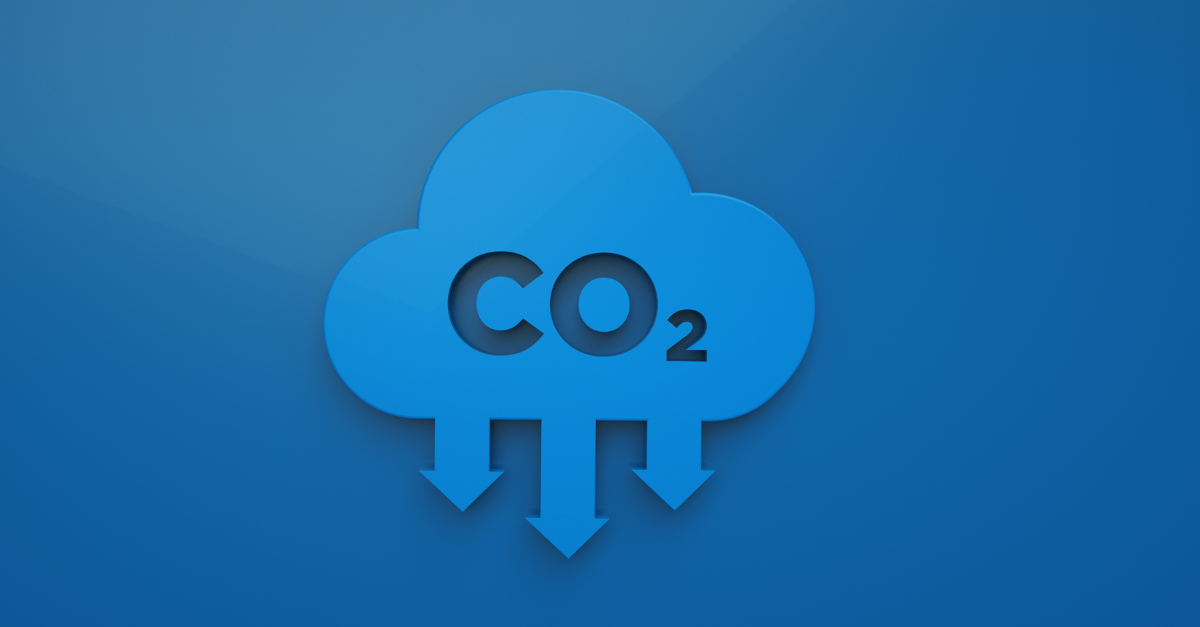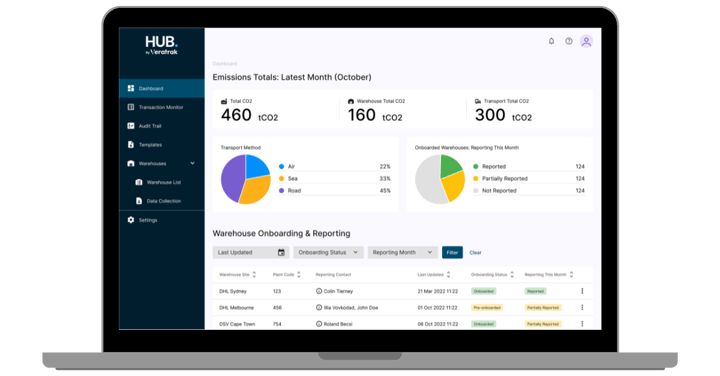A data-driven approach to reducing your supply chain carbon footprint

The global supply chain has connected customers with drug product manufacturers and patients in need across the world, however the Biotech and Pharma industry is a significant contributor to global climate change, and therefore must accelerate their path to net zero.
While the industry is supportive of the 2015 Paris Climate Agreement, there are concerns about its environmental impact and the need for further action to address climate change. And yet, a December 2023 study released during COP28 revealed that 91% of biotech and pharmaceutical companies do not have carbon reduction targets aligned with the Paris Agreement.
Facing increasing regulatory pressures, a growing consumer demand for transparency, and the critical urgency to combat climate change, pharmaceutical organisations are seeking innovative solutions to embed sustainability into their core operations. One of the pivotal challenges in this journey is the effective management of Scope 3 emissions. In this article, we look at the challenges and solutions pharma organisations need to consider to improve their environmental footprint, by enabling effective emission management and enhancing operational efficiency.
Understanding Scope 3 Emissions
Before we delve into solutions, it is crucial to understand what Scope 3 emissions are and why they matter. Scope 3 emissions are indirect emissions that occur in a company's value chain, including both upstream and downstream activities.
For pharma companies, this can range from the production of raw materials to the end-of-life treatment of sold products. Unlike direct emissions (Scope 1) and indirect emissions from purchased energy (Scope 2), Scope 3 emissions are often the largest source of carbon emissions for organisations, yet the hardest to control and reduce. In fact, a report by Deloitte states that for many businesses, Scope 3 emissions account for more than 70 percent of their carbon footprint.
The Importance of Managing Scope 3 Emissions
A strategy of sustainability requires deliberate steps to offset carbon footprint, such as minimising packaging, combining shipments and improving routing efficiency. With a target of net zero for 2050, pharmaceutical companies need to tackle scope 3 emissions, and from FY24, they will be required to provide granular sustainability information.
Next to meeting changing regulatory requirements, managing Scope 3 emissions efficiently is essential for several reasons:
Regulatory Compliance: With global initiatives aiming to reduce carbon emissions, such as the European Sustainability Reporting Standards (ESRS) adopted in July 2023, companies are increasingly required to report and reduce their carbon footprint, including Scope 3 emissions.
Corporate Responsibility: Stakeholders, including investors, customers, and employees, are demanding greater environmental responsibility from companies. An example of this commitment within the pharmaceutical industry is GSK*, which has set ambitious goals for achieving a net-zero impact on climate. By 2030, GSK aims to reduce carbon emissions by 80%, with the remainder offset through investment in high-quality nature-based solutions. This dedication to environmental care is detailed in their Pathway to Net Zero Impact on Climate 2022 report, showcasing their strategy to integrate environmental considerations into their business operations
Risk Management: Addressing Scope 3 emissions helps companies anticipate regulatory changes and avoid supply chain disruptions. Highlighting this, AstraZeneca* showcases a strategic sustainability approach by targeting a 50% reduction in Scope 3 emissions by 2030 from a 2019 baseline. Their Ambition Zero Carbon program demonstrates how aligning environmental goals with business strategy can improve operational resilience, as seen in their case study.
Competitive Advantage: Companies that lead in sustainability can differentiate themselves, opening up new markets and customer segments. EY highlights that integrating sustainability across functions and value chains offers a competitive edge, fostering innovation and value for stakeholders. A deep dive into the strategy can be found in EY's discussion on how sustainability strategies create competitive advantage, providing insights for businesses aiming for long-term resilience and success EY Insights.
[*company examples used are for illustrative purposes and not intended to imply these are customers]
Our Commitment to Sustainability
As a software company, our commitment to sustainability extends beyond the features of our platform. At Veratrak, we're dedicated to helping the pharma industry progress towards its sustainability goals through innovation, collaboration, and continuous improvement. By providing the tools and insights needed to measure Scope 3 emissions effectively, we're not just helping companies comply with regulations, we're helping them become leaders in sustainability.
The Role of the Hub Platform
Our supply chain platform, the Hub, is a cloud-based platform designed to address the lack of visibility across the pharma supply chain, including the critical task of collecting Scope 3 emissions metrics.
Here’s a closer look at the difference our platform makes:
Data Collection and CO2 Measurement
A big challenge in reducing Scope 3 emissions is that suppliers are often in different countries, with different regulations. Using our integrated Hub Platform, connected customers are able to aggregate unified data from their global partners across their supply chain network. By centralising this comprehensive data in a single dashboard, our platform enables a standardised calculation of CO2 emissions from 3rd party logistics suppliers and warehouse activities. This feature empowers pharma companies to identify key areas where emissions are highest, offering insights into potential strategies for carbon footprint reduction.
Reporting and Compliance
The Hub Platform simplifies the complex process of gathering data and generating reports on Scope 3 emissions, in line with the GLEC Framework, a universal method for logistics emissions accounting, to help ensure compliance with regulatory requirements and standards. This alignment with GLEC standards supports accurate logistics emissions reporting, enabling companies to not only report on their sustainability efforts consistently, but also to monitor and evaluate their progress over time - with historical data, which enables them to make informed decisions on their path to net zero.
Kickstarting your journey to Decarbonisation: Measuring Your Scope 3 emissions
Measuring and tracking carbon emissions impact is an essential start up point to demonstrate progress against reduction targets. Our product, the Hub platform, is a game-changer for pharmaceutical companies aiming to optimise their supply chain operations while embarking on a decarbonisation journey.
It does this by providing a streamlined solution for integrating your company with a range of suppliers. This avoids the need for expensive and complex direct point-to-point integrations with each provider, making the entire process more seamless.
The platform acts as a pivotal link, connecting systems across pharmaceutical companies, logistics, and contract manufacturing organisations. This connectivity facilitates unprecedented collaboration and visibility, leading to significant efficiencies across the supply chain.
Crucially, the platform harnesses the integrated data to perform a vital function: it collects transportation and warehouse data from your logistics and warehouse partners to accurately calculate Scope 3 emissions. This precise calculation is essential for companies focused on reducing their carbon footprint and meeting sustainability targets.
Armed with these detailed Scope 3 emissions calculations, companies can generate detailed reports and access analytics on their data. The dashboard demonstrates how data can guide strategies to target specific emission sources, like the road transport segment, for impactful sustainability initiatives. With such targeted insights, businesses are better equipped to streamline their efforts towards more eco-friendly practices.
By choosing our Hub integration platform, pharmaceutical companies can not only enhance visibility into their supply chain operations, but also take a significant step towards understanding and reducing their environmental impact. This focused approach to emissions measurement is a cornerstone for any organisation committed to decarbonisation.
Next steps for Pharma
Building sustainability into the pharma supply chain is a complex but achievable goal. With the right technology to measure their impact, companies are well-positioned to make substantial progress in diminishing their environmental footprint. The Hub Platform goes beyond what usual supply chain tools do, providing a key way to build a greener future for the pharmaceutical sector.
Our award-winning software solutions enable participants along the life sciences supply chain to collaborate in new ways. Contact us to discuss how the Hub can support your sustainability reporting strategy with Scope 3 emissions calculations, and suppliers' KPI management.
Other articles you might find interesting:
Regulations are evolving to facilitate sustainable supply chain operations
Modernising IT Systems Upgrading the Supply Chain Industry for Success

